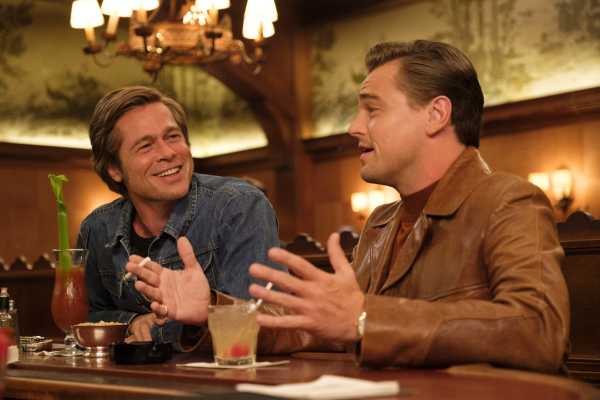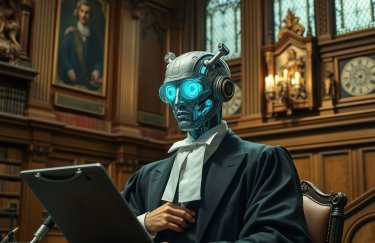
Note: This article contains major spoilers for Once Upon a Time in Hollywood, and in particular the end of the film. If you haven’t seen the film yet and do not wish to be spoiled, read the spoiler-free review instead.
Before Once Upon a Time in Hollywood’s Cannes premiere, director Quentin Tarantino made waves (and ruffled a few feathers) by asking the audience not to reveal what happens at the end of the upcoming film. In some ways, it was a baffling ask. After all, Tarantino had announced months earlier that the film would center on the notorious murderer and cult leader Charles Manson and his “family,” and in particular, the murder of actress Sharon Tate, played by Margot Robbie.
And that’s just history — well-known, well-trodden history. The story of the Manson Family and the Tate murders (as well as the LaBianca murders the following night) has been told and retold in documentaries, memoirs, novels, docudramas, and fully fictionalized versions in the 50 years since they happened. What was there to spoil?

Never say never when it comes to Tarantino, a director who notoriously enjoys messing with history in his films. Like it or hate it (and I’m personally mixed on how effective I think it is), the twist ending of Once Upon a Time in Hollywood — which changes history with respect to the Manson story and the Tate murders — is very much in keeping with Tarantino’s style. And it’s clear he has something to say.
So here’s what happens at the end of Once Upon a Time in Hollywood, what really happened the night Sharon Tate died, and what Tarantino might be up to.
Once Upon a Time in Hollywood rewrites history
Once Upon a Time in Hollywood isn’t a true story. And while fictional characters Rick Dalton (Leonardo DiCaprio) and Cliff Booth (Brad Pitt) bump into a lot of people who really existed along the way — the famed Bruce Lee (Mike Moh), for instance, or Catherine Share (Lena Dunham), nicknamed “Gypsy,” the ringleader of the Manson girls — the story is still their own, made-up tale.
But for the most part, the history happening around them tracks with actual history, until the end of the film: the night of August 8, 1969, when four followers of Charles Manson, at his behest, drove to a house on Cielo Drive with the intent to commit murder.
In Once Upon a Time in Hollywood, the events go down differently. Four members of the Manson Family — Tex, Sadie, Flowerchild, and Katie (played by Austin Butler, Mikey Madison, Maya Hawke, and Madisen Beaty) — do end up on Cielo Drive, where Rick and Cliff are on a bender in Rick’s house, next door to Tate and Polanski’s.
Shortly after Cliff leaves to walk the dog, the four young people pull up and park their car. But Rick, who’s had just about enough of these damn hippies, comes tearing out of the house, swearing a blue streak and ordering them to leave. And they do.
For a little while, anyhow. But soon they hatch a new plan.
Related
Once Upon a Time in Hollywood is Tarantino’s fun, haunting homage to the summer of ’69
The quartet had been headed to the house next door to Rick’s, on Charlie’s orders. (The house Tate and Polanski were renting had formerly been the home of Terry Melcher, a record producer whom Manson partly blamed for his failure to make it as a recording artist.) But their goal was always to murder some “political piggies” — wealthy, comfortable people, essentially — and make it look like the murder had been committed by members of the Black Panthers to spark a race war and apocalypse that Manson called “Helter Skelter,” named after lines from the Beatles’ White Album. (If you find that reasoning confusing, well, you’re not alone.)
In Once Upon a Time in Hollywood, Tex suddenly realizes that the guy who was just yelling at them was Rick Dalton, former star of the TV Western Bounty Law, which they’d all seen on TV. Sadie says that since TV had taught them all to kill, it’s only fitting that they go back and kill the guy from TV. So the group decides to head back to Rick’s house.
Meanwhile, Cliff returns to the house. It’s late; both he and Rick are high and drunk. And they’re both trying to relax.
While Tex, Sadie, and Katie start sneaking toward the house, Flowerchild remains with the car and, when she loses her nerve, presumably because she doesn’t want to commit murder, drives it away, stranding the other three there. But they carry on their mission: Katie heads around to the back of the house, where Rick is floating in the pool, and Tex and Sadie enter through the front door, where Cliff is hanging out.
What ensues is an epic fight, as the film explodes into graphic violence, much of which is played for comedic effect. Rick, Cliff, and the dog all get into the act, as well as Rick’s wife, an Italian actress (Lorenza Izzo), who’s been sleeping in the bedroom. In the end, they overcome and kill the trio of Manson acolytes. (A flamethrower, some curb-stomping, and a lot of blood is involved.)
Having heard a disturbance, Sharon Tate (Margot Robbie) and Jay Sebring (Emile Hirsch) emerge from the house and meet their neighbor, Rick, to find out what happened. Rick is elated; he’s been dying to meet Tate, a movie star married to Hollywood’s hottest director, since he moved in, but he hasn’t had any luck.
The group chummily walks up Tate’s driveway, conversing like old friends, as the camera pulls back. It is, for them anyhow, a happy ending.
What actually happened was not quite as cheery
So what actually happened on the infamous evening of August 8, 1969?
Once Upon a Time sticks to the facts in some respects. Tex Watson, Susan Atkins (nicknamed “Sadie”), Linda Kasabian (whom the movie calls “Flowerchild”), and Patricia Krenwinkel (whom the group called “Katie”) were out for blood that night, on Manson’s orders, to start a race riot. (In fact, Manson had only given Watson the order to commit murders “as gruesome as you can.” The girls were merely instructed to follow Watson’s orders, and he waited until they neared the house to tell them what they were there to do.) And they did roll up to Cielo Drive in search of Terry Melcher’s house.
So instead of ending up at the house of Rick Dalton (who is, after all, a fictional character), they went to Melcher’s house, where Roman Polanski and Sharon Tate lived. Polanski, one of Hollywood’s hottest young directors — his horror film Rosemary’s Baby had been a sensation the year before — was away at the time. But Tate, an actress who’d broken out with Valley of the Dolls in 1967 and was at the time eight months pregnant, was at the house, as well as her friend (and ex-boyfriend) Jay Sebring, a well-known hairstylist, and another couple: aspiring screenwriter Wojciech Frykowski and Abigail Folger, heiress to the Folger coffee fortune.
Watson cut the phone lines to the house shortly after midnight. The group parked their car at the bottom of the hill and walked up the driveway, then entered the grounds. As they walked, they spotted a car driven by an 18-year-old student named Steven Parent, who had been visiting the groundskeeper. Watson approached the car, and while Parent begged for his life, Watson sliced Parent’s hand, then shot him four times through the chest, killing him.
Then the group searched for a way to get into the house. Watson sent Kasabian to look for an open window; she found two but didn’t tell him. Kasabian was new to Manson’s family, and she was losing her nerve. Watson sent Kasabian to stand guard, found a window, cut it, climbed in, and let Atkins and Krenwinkel into the house through the front door.
Once they were inside, the slaughter really began. The details are brutal and well-documented. But all four of the inhabitants were murdered after a protracted struggle in which Tate begged for the life of her unborn child. Krenwinkel stabbed Folger 28 times. Watson stabbed Frykowski 51 times and Sebring seven times, and, with Atkins, he stabbed Tate 16 times.
On the way out, they wrote “pig” on the front door of the house, in Tate’s blood.
So why does it end this way?
Oddly enough, Once Upon a Time in Hollywood is not the first film to come out in 2019 to rewrite the ending of the Tate murders. The Haunting of Sharon Tate, starring Hilary Duff, also reimagines what happened that night, this time as a way of giving Tate back the control of her own story that she lacked in life.
But although Tate is part of the story of Once Upon a Time in Hollywood, she isn’t its main or only focus. Instead, Tarantino is telling a story about a whole era, an entire culture. He positions his story at a time when old-school stars like Rick were losing their foothold on the movies as golden-era Hollywood gave way to the rougher, sometimes more daring films of the ’70s. It’s a story of one generation giving way to another, and — like others have in the past — Tarantino plugs the story into the Manson Family, suggesting the summer of ’69 was a turning point.
Yet Tarantino twists the tale at the end. You can look at the Tate and LaBianca murders and the paranoia that swept the nation as a tragedy, but Tarantino wants to tell a fairy tale. (Just look at the title of the movie.)
So he bathes the whole story in golden light, as if the film were all shot under a friendly sun, and actually changes history at the end. Instead of unsuspecting people murdered in their houses, the would-be murderers get their comeuppance, in cartoonishly violent fashion. And instead of old Hollywood giving way to a newer, grittier era, things go back (at least for now) to the way they were.
It’s not the first time Tarantino has done this, of course — both 2009’s Inglorious Basterds and 2012’s Django Unchained hinge on revisionist revenge fantasies in which the director graphically, gleefully upends the normal order of things and changes history.
But it’s an especially poignant fantasy in this case, since this isn’t just a movie about something that happened; it’s a movie about something that happened in Hollywood. That Manson landed in LA, and tried for years to gain fame himself, is indicative of what drew (and continues to draw) people to Hollywood. It’s the same drive that is pushing Rick right off the cliff: When Hollywood once embraced you and now you’re being edged out, what really is left?
And so Once Upon a Time in Hollywood is a movie about the unique, piercing pain that comes along with being a star. That’s why Tate’s scenes in the movie theater, in which she watches herself onscreen (in her latest movie, The Wrecking Crew) and grows more delighted as the audience responds positively, are so affecting: Despite being a bona fide star, married to one of Hollywood’s hottest directors, she is still seeking affirmation from a fickle audience that’s distracted by the next shiny object. In 1969, Tate is that shiny object, at least to those who only know her as the gorgeous girl onscreen — but she seems to instinctively know that, like Rick, she won’t be forever.
So the ending of Once Upon a Time in Hollywood is a way of turning an elegy for a bygone era into a fantasy, a fairy tale, a “what if.” What if the old Hollywood was never killed off? What if Sharon Tate had lived, and not been identified almost exclusively in the future by the way she died? What if Rick — whose era in Hollywood history was marked by Westerns, old-school stories with clear good and evil — wasn’t phased out in the face of the forthcoming counterculture, but welcomed into it by younger faces like Tate’s?
What if guys like Rick and Cliff managed to fulfill their destiny, as an action star and a stuntman, by actually (if accidentally) staving off one of the most enduring, horrific crimes in Hollywood history? What if that’s what they’d been training for all along?
Of course, that’s not what happened. Tarantino knows it. His actors know it. We know it, out in the audience. Without everything that followed, in fact — without the confusion and rebellion that sank deeper into Hollywood filmmaking in the decade that followed — it’s likely Tarantino wouldn’t be Tarantino at all.
But what if, for one night anyhow, they’d all lived happily ever after?
Sourse: vox.com






